#rhun moodboards
Explore tagged Tumblr posts
Text
Tolkien OC Week
A fandom event for OCs and underdeveloped characters in Tolkien's world!
This event celebrates both characters of Tolkien's world and our own characters that need more love, by creating and reblogging all kind of fanworks, like fanfiction, fanart, fanvideos, fancrafts, headcanons, playlists, edits, moodboards etc.
The event is modded by @yellow-faerie, @elamarth-calmagol and @stormxpadme and will take place between 25th August - 31st August 2024 for the fourth year running.
NSFW text entries are allowed and we’ll tag them accordingly when we reblog them, but please put them behind a “read more”.
We'll also be tracking the tag #tolkienocweek during this week!
*******************************************
Event schedule for 2024:
Day 1 (25th August): World Building
Create a fanwork about an original character, and use them as a jumping off point for worldbuilding. Share a dwarf from the far side of Rhun, consider the existence of an Aina before the creation of Arda, explore Rivendell from the point of view of an outsider, or tell us about the underground punk subculture of Gondolin.
Day 2 (26th August): Canon-OC Relationships
This year, it’s not just about romance. Today, explore a relationship between your OC and a canon character. Your character could be a lover or spouse of someone canonical, lf course, but they could also be a friend, sibling, teacher, servant, fan, or even rival!
Day 3 (27th August): Alternate Universes
Share an OC who isn’t canon compliant at all. Maybe you want to add a fourteenth member of Thorin’s company or give a reborn Celebrimbor children with a surviving and reformed Sauron. Or, maybe you want to do a crossover with your Star Wars OC or let your self-insert narrate a coffee shop AU. Go wild!
Day 4 (28th August): Gaps and Ghosts
Create a fanwork based upon a character that Tolkien either thought up and abandoned, such as Odo Took oe the characters of The New Shadow. Or, create someone he missed creating in the first place, like… um… just about anyone’s mother.
Day 5 (29th August): Non-Humanoid Characters
Middle Earth isn't just elves, Men, hobbits, and dwarves. Today, share a character who is something different entirely: an animal, a dragon, a Maia who doesn't take humanoid form, an ent or huron, or a creature of your own invention.
Day 6 (30th August): Background Characters
This prompt is all about people who are in the background of the action: the low-ranking soldiers, the servants, and the ordinary people living in extraordinary times. Or maybe you want someone who isn't so ordinary, like an advisor in the Council of Elrond who never made it onto the page, or one of the Maiar who sank the Feanorians on the stolen boats. Show us their view of the action!
Day 7 (31st August): Freeform
Did we miss something? Do you have an OC that doesn’t fit into any day, or did you want to do a second fanwork for one of the days? Today, create and share whatever you want, as long as it has to do with original or abandoned characters!
*******************************************
*******************************************
Since we want to celebrate creations about neglected characters all year long, the mods will occasionally reblog posts and fancreations about OCs and underdeveloped characters. If you would like to see your post on our blog, you're very welcome to tag tolkienocweek. Since tumblr's tagging system is often being faulty, don't hesitate to message us, too!
We are looking forward to see and share all the awesome work you come up with!
#lotr#lord of the rings#the hobbit#hobbit#the hobbit movies#lotr movies#silm#the silm#silmarillion#the silmarillion#tolkien#the legendarium#ocs#original characters#tolkienocweek
207 notes
·
View notes
Text

Through love, all is possible. // Cresent City.
#fav#art#personal#photography#book aesthetic#books#sarah j maas#crescent city#hunt athalar#rhun danaan#bryce quinlan#fandom#fandom aesthetic#book nerd#moodboard
18 notes
·
View notes
Photo








RHÛN REGIONS MOODBOARDS - [XV] Logathavuld
From the Redwater in the west, to the wide plains in the east, and from the barren wastes in the north to the Inland Sea in the south, the nomadic Logath tribes reign supreme.The Area is therefore known as the Logathavuld.

Throughout this region, young Logath males follow the tribal herds through their annual grazing patterns; spending the warm months roaming the rocky hillsides, then descending to the shelter of lowland valleys when the fierce winter winds arrive.
Only a few times a year do their wanderings bring them home, to sheltered wain-camp sites where the tribal matriarchs rule. This traditional social organization has been practiced by the northern nomads since they settled theselands in the mid-Second Age. It's a rare tribal elder that can recall the old stories that demonstrate that times have not always been this peaceful. The wide lands of Logathavuld are divided into a multitude of different tribal ranges, and only someone familiar with a particular region of Logathavuld will be able to point out the subtle tribal markers to the untrained eye of the occasional traveler. Among the most influential of the tribes are the Narkad, Barak, Utal, Gord, and the most powerful Ibar. Individual clans have their own traditional campsites within the tribal range, most of which are seasonally occupied.
Each year, clan matriarchs evaluate the state of their herds and select a surplus group that will bedriven to the market at Sadvar, on the Ulumur. With the wealth gained through the sale of their cattle, the tribespurchase all those items that the market can provide, but the tribes themselves cannot produce.
#my edits#rhun moodboards#tolkienedit#lotredit#Logathavuld#MERP#Logath#Rhûn#Rhun#Sea of rhun#easterlings#easterling#wainriders#balchoth
55 notes
·
View notes
Photo





RHÛN REGIONS MOODBOARDS - [XVI] Gazar Gord
Gazar Gord was a hilly region north of the Eryn Rhûn, home to the Logathig Gord-Clan.
RHÛN REGIONS MOODBOARDS - [XVII] Gazar Barak
The Pastures of the Barak Clan or Gazar Barak were a tribal area in southwestern Logathavuld alond the river Carnen.
RHÛN REGIONS MOODBOARDS - [XVIII] Gazar Narkad
The Pastures of the Narkad Clan or Gazar Narkad was a tribal area in western Logathavuld alond the river Carnen.
RHÛN REGIONS MOODBOARDS - [XIX] Gazar Utal
The Gatar Utal were the traditional Tribal land of the Logathig Utal-Clan.
RHÛN REGIONS MOODBOARDS - [XX] Gazar Ibar
The Pastures of the Ibar Clan or Gazar Ibar was a tribal area in southern Logathavuld alond the river Ulumur.

#my edits#rhun moodboards#tolkienedit#lotredit#rhun#easterlings#rhûn#easterling#logathavuld#gazar narkad#gazar barak#gazar utal#gazar gord#gazar ibar#logath#sea of rhun#wainriders#balchoth
24 notes
·
View notes
Photo








RHÛN REGIONS MOODBOARDS - [XXI] Kugavuld The Kug Valley or Kugavuld was the ancestral home of the Kugath-Easterlings. A very fertile area in the northern shores of the Sea of Rhûn.

The Kugath were a culture of Traders and fishermen along the northern shores of the Inland Sea along the river Kug, Kug Bay and the town of Kugavod. They were descendants of both -indigenous Bothar-Easterlings - and Northron Settlers.
This is the last part of Rhûn series.
#my edits#rhun moodboards#Rhûn#Easterlings#Kugavuld#MERP#Sea of Rhûn#Rhovanion#Dale#Rhun#Easterling#Balchoth#Wainriders#Bardings#Kugath#Bothar#Kugavod
25 notes
·
View notes
Photo








RHÛN REGIONS MOODBOARDS - [XIV] Lotan
Lotan was situated to the west of the mouth of the river Talathrant, along the southern shore of the Gulf of Utûm. A deciduous forest covered most of its northern reaches, while dense marshlands occupied the river valley to the east. The rest of the area consisted of a cool, rich grassland.

Ulgathig-speaking herders dominated the region, the Lothrag who were close cousins to the ancestors of the Wainriders.
The Lotani, or Lothrag, were a Nomad and Hunter Culture in the Woodlandss and Steppes of Lotan. They were descendants of the Haid, eastern kinsmen of the Ulgath-peoples, and still recognizably close to their western kin in terms of language and religion.
#my edits#rhun moodboards#tolkienedit#lotredit#Lotan#MERP#Rhûn#rhun#sea of rhun#balchoth#wainiders#easterlings#easterling#Lotani#Lothrag#Rahiwenna#Hazga
19 notes
·
View notes
Photo
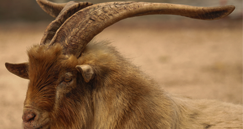


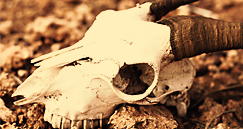

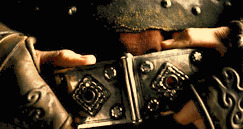

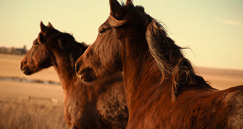
RHÛN REGIONS MOODBOARDS - [II] Sagathavuld
Sagathavuld in southwestern Rhûn was the tribal realm of the Sagath-Easterlings.
The Sagath were an Easterling Tribe on the eastern Borders of Rhovanion. Sometimes also the Brygath of southern Rhûn were called "the Southern Sagath".
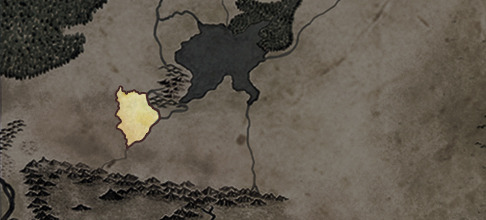
In the Ulgathic tongues, the word Sagath means "Raiding People". The actual collection of tribes which call themselves Sagath is limited to those in Rhovanion and southern Rhûn who still trace their ancestry back to the Szreldorn survivors of the Battle of Dagorlad. These tribes exist mostly in central and northern Rhovanion, though there are still scattered bands who prowl the plains west of Buhr Armenrik. These Sagath lead a life of mayhem, stealing what they need or desire from their neighbors and the caravans that still cross the open plains. Theirs is the most mobile culture in Rhûn, for they lay no legitimate claim to any of the lands they traverse. Instead, the bands are always on the move, keeping all of their posessions in the great wagons for which they are known. The Sagath are a male dominated society. Women hold no social standing except between themselves, and have no sayin the movements or actions of the band. A Sagath band normally consists of several dominant male warriors who vie constantly for prestige among their peers. Power within the band is a constant test of strength, which has sometimes led a Sagath band to destroy itself. This greatly inhibits their ability to organize themselves into a fighting force to challenge the sedentary peoples of Rhûn, though there are a few notable exceptions to this rule. The Hûz (formerly Hos) clan is an example of a succession of Sagath warlords who have consistently been able to dominate their peers and vie for real power in Rhovanion. The Hos clan was founded in the opening days of the Third Age by a member of the Szreldorn family who once owned the lands upon which Ilanin sits. Subsequent warlords in the tribe's history have used this extra evidence of legitimacy to maximum advantage. Beyond those who consider themselves Sagath, there are many other tribes in all corners of Rhûn who are called Sagath by others. Particularly warlike bands of Logath, Urgath, and especially Brygath are all named Sagath by their neighbors. In most areas of Rhûn, the term simply connotes an aggressive band who is prone to take from their neighbors what they cannot make of buy for themselves. This has led to a great deal of confusion for visitors to Rhûn. Vidugavia and Minalcar made the mistake of asking the question, "Where are the Sagath?" Any tribe, when posed this question, is libel to point out the biggest rival. This led the western army, in their ignorance, to commit grievous mistakes in southern Rhûn and to alienate most of its residents.
The remaining Sagath allied themselves -or were subjugated by - the Kings of Mistrand and became part of the Igath or Wainriders.
After the fall of the Wainrider empire the term Sagath appeared on and off as a denomination for plundering or renegade easterling tribes as a dialect term in the local Westron dialects of Rhûn, however these later "Sagath" had mostly little to do with the original tribal confederation of Urgathic and Szreldorn descent.
#my edits#rhun moodboards#tolkienedit#lotredit#sagathavuld#sagath#rhun#rhûn#easterling#easterlings#khand#variags#rhovanion#dorwinion#wainriders#balchoth#tolkien#the lord of the rings
119 notes
·
View notes
Photo








RHÛN REGIONS MOODBOARDS - [VI] Rhûnaer
The Gaer Rhunen or Rhûnaer is a shallow inland sea of 15,430 square miles fed by many of the rivers of the plain of Rhovanion and Rhûn.

It has an average of 10 fathoms deep with its deepest point at 46 fathoms. It has many shoals, especially along coasts in the southeastern quarter.
The average wind speed is from 6 to 8 knots, and has average waves height from 1 to 2 feet.It was large enough to experience tides (which varied about eight inches on average). The influx of several rivers created the illusion of a current which ran counter-clockwise around the Sea.
The shoals in the Gaer Rhunen were invisible to inexperienced pilots, and navigation was best left to expert guides. The waters had a faintly salty taste, and despite freezing temperatures in the winter months, the Sea was always free of ice.
Several tribes of Easterlings derived their sustenance from the Gaer Rhunen. It acted as a highway for much of the trade to the West, and it was also teeming with fish. Few Northmen or Dunedain ever viewed the Sea, but those who had dealings with the Easterlings knew of its importance to their culture.
#my edits#rhun moodboards#tolkienedit#lotredit#sea of rhun#gaer rhunen#rhunaer#rhûnaer#sea of rhûn#rhûn#rhun#easterlings#easterling#balchoth#wainriders#rhovanion#dorwinion#celduin#carnen#lord of the rings#tolkien
55 notes
·
View notes
Photo








RHÛN REGIONS MOODBOARDS - [IX] Horseplains
Horseplains or Morad collectively referred to all the lands of southern Rhûn (or Harrhûn), east to Gathod and the Sagathavuld.
The Northern Steppes of Khand merged invisibly with the Horseplains serving as hard-fought northern borders of the Variag-realm. The Asdriags knew this region as Asdriagien Lîtto, their old ancestral homelands from which they had been driven out by their Variag kinsmen.

#my edits#rhun moodboards#tolkienedit#lotredit#MERP#Asdriags#variags#khand#rhûn#horseplains#morad#rhun#sea of rhun#balchoth#wainriders#tolkien#easterlings#easterling#lord of the rings
34 notes
·
View notes
Photo








RHÛN REGIONS MOODBOARDS - [III] Gathod
Gathod (Ul. ‘Land of Passage’).This area was the plains between the Inland Sea of Rhûn and the Ered Lithui mountains and one of the main regions of the Ulgath Easterling tribe, and especially the Odhriags.

The Odhriags were an easterling People in southern Rhûn, close to the Mountains of Mordor.
Like the Asdriags, the Odhriags also have in them a measure of Ioriag blood. In their case, however, Ioriag ancestry has been combined with the Aharic traditions of the Otyassi,forming a unique cultural mix. The Odhriags prize independence from foreign influence as their greatest asset,and guard their lands jealously from encroaching neighbors.Their history is largely one of resistance. They have consistently resisted attempts by servants of the Shadow to bring them under the influence of the Dark Lord. They have resisted the momentum of mass-migrations out of the east,which has threatened to displace them several times throughout the ages. They resisted the mandates of Gondor,which demanded an opening of their lands for the passage of Minalcar and Vidugavia's armies in T.A. 1247. Though they paid dearly for this defiance, they were never wholly conquered by the western army, and have since grown to reclaim the ranges that were stripped from them.The Odhriag homeland lies along the northern slopes of the Ered Lithui, between the Warwater and the Surubeki watersheds. While much of Odhriag culture comes from their Ioriag forefathers, they are also the only group of Easterlings with their own set of formalized laws. These laws, known as the Vasagh, have their roots in the ancient Aharic laws which were brought into Rhun by the Otyassi in the Second Age.The laws were again formalized by Khorgul Hotun at the end of the Second Age. This occurred after the defeat of Sauron's army at Dagorlad. In celebration of the end of Mordor's oppressive treatment of the Odhriags, Khorgul had the Vasagh carved into the sheer side of a peak which towers over the main Odhriag settlement of Khurvasagh (Od. "Placeof the Law").
The Odhriags were subjugated by the Pultai Dynasty from Kykurian kyn and became part of the Balchoth.
#my edits#rhun moodboards#tolkienedit#lotredit#rhun#rhûn#easterlings#easterling#khand#variags#mordor#ered lithui#odhriags#gathod#balchoth#wainriders#tolkien#lord of the rings
53 notes
·
View notes
Photo








RHÛN REGIONS MOODBOARDS - [VII] Urgathavuld
The Steppes and prairies east of the southeast-bay of the Rhûnaer were known as the Urgathavuld, ancient homeland of the Urgath-Easterlings.
In the Sindarin tongue this region was known as Telaith Lyst (S."Empty Plains") was the name given to the far grasslands between the river Surubeki and the region known as Menelothriand (S. "Land of thousand flowers") by the Gondorians.

The Urgath are a loose collection of matriarchal tribes descended from the Southern Ulgath of the Second Age.Their ancestors dwelt for centuries along the banks of the Talathrant River and were allied to the Variags before both peoples were evicted by rebellion. In their journey to Rhûn, they were transformed into a much smaller collection of tribes and were content to dwell in peace along thesoutheastern coast of the Sea and along the Surubeki River.The Urgath developed into a pastoral semi-sedentary people,and their cultural traditions have had a great deal of influenceon the Gathmarig culture which evolved in their midst. Over its history, Urgath culture has shown itself to be prone to outside influence. The shadow gained control of the tribes through religion in the Second Age and the Urgath fought on the side of Mordor at Dagorlad. Later, the Urgath wereheavily influenced by Folyavulda (Dorwinrim) traders and sided with the men of Kelepar against the servants of Kerkassk (Sauron) in the War of Clay Jars. Since the plague, however, the Urgath havebeen thoroughly dominated by Mistrand and are again counted among the subjects of the Dark Lord.
The Urgath of Mistrand evolved into the Gathmarig while their poorer more southern brothers became the Brygath. The Kings of Mistrand later made the Brygath their vassals, both tribes became the Igath, the uniting force of the Wainrider confederacy.
#my edits#rhun moodboards#urgathavuld#urgath#telaith lyst#brygath#gathmarig#easterlings#easterling#rhûn#rhun#sea of rhûn#MERP#tolkienedit#tolkien#lotredit#variags#khand#balchoth#wainriders#igath
45 notes
·
View notes
Photo








RHÛN REGIONS MOODBOARDS - [X] Pûstrava
The Pûstrava were arid foot hills reaching out east from the Ered Lithui serving as border between Gathod and northwestern Khand. It was the homeland of the Asdriag tribe.
The Asdriags were a collection of nine Ioriag tribes that dwelt for much of the Second Age among the arid foothills of the Pustrava and the Horseplains (land that they called “Asdriagien Lîtto”). In T.A. 1100 the tribes were forced to flee the region they called home because of mounting aggression from their stronger neighbors in Nurad and Khand.

In T.A.1640 these scattered bands inhabit areas of central Gathod and eastern Dor Rhûnen. The Gondorian military Cáno at Thorondir blamed much of the recent instability of Dor Rhunen's frontier on the Asdriags and has led repeated excursions into the plains to drive these tribes back into the east. The westernmost tribes were the most desperate of their kind, sheltering where possible in the foothills of the Dwergabergos and the Ered Lithui, living on what can be hunted or scavenged in the wild.
In Gathod, the Asdriags had enjoyed a bit more success. Some tribes had laid claim to lands on the fringes of Odhriag and Brygath ranges. Other than the occasional territorial squabble, these Asdriags dwelt for then in relative peace. They had settled into a stable migration cycle across their territory, which while poor by the standards of their neighbors, is a place of abundance in comparison to the Pustrava. In the end, however, the Asdriags were an Ioriag people and were sometimes wont to revert to the martial ways of their ancestors.
Odhriags, Donath, and Ibnotithuida alike casted a wary eye toward Asdriag lands. While their lack of numbers has never allowed them to dominate their neighbors,their fierce warriors were more than capable of wreaking significant mayhem in Gathod should the need arose.The easternmost Asdriag tribes dwelt in ranges near the city of Mistrand and had become entwined in the politics of that city. Nemol (the former King of Rhûn) had recognized in the traditional tribal priestesses (the "Hûriga") of the Asdriags a rare talent for witchcraft. As a result, Asdriag priestesses enjoyed some degree of respect within the city. Some of the more prominent priestesses had evenworked their way up through the ranks of Kerkassk's religious organization and then sat on the Osvoda's personal council in the city. There was then even the rumor of a union between the former Osvoda and Taran Karkuva, the chief priestess on the council. This coupled with the increasing reputation of Asdriag warriors within the Kharg Huka promised to raise the Asdriags to a new level of prominence in southeastern Rhûn.
The Asdriags were subjugated by the Pultai and became part of the Balchoth.
#my edits#rhun moodboards#tolkienedit#lotredit#MERP#Pustrava#Asdriags#Rhûn#Rhun#Easterling#Easterlings#Sea of Rhûn#Balchoth#Wainriders#Tolkien#The Lord of the Rings#Khand#Variags#Gondor
26 notes
·
View notes
Photo








RHÛN REGIONS MOODBOARDS - [XII] Kykurian Kyn
The Kykurian Kyn (D.S. "Black Land of the Black and Red Cryers") lay east of Rhûn, above the western banks of the Talathrant. A vast grassland characterized by intermittent collections of rolling hills, it was populated by a host of ever-shifting Ulgathig- and Ioradja-speaking peoples. The former group, which dominated westernmost Kyn and eastern Rhûn, were known throughout Gondor as the "Wain-easterlings." The latter were often referred to as the "Balchoth".

Kykurian Kyn is the homeland of the Kykuriag and Magriag tribes. The Magriags moved to Rhovanion and became subjects of the Necromancer of Mirkwood. They were forerunners of the later Balchoth-Confederation along with the Asdriags and Odhriags. The Kykuria, though they were believed to be largely descendants of the Ioriags and Tyr-Nomads the Kykuria were noted for their exeptionally fair hair and skin, being golden-haired and blue-eyed like a Northron not beeing rare among their kind. This had led some scholars to suggest ancient ties to the Lintador, especially the branch that produced the House of Hador. The Kykurian Pultai-Dynasty later evolved into the Balchoth.
Kykurian Kyn can be devided into two big regions: Taj Mokba, the westernmost Kyn characterized for a hilly landscape; and Tej Oda, the easternmost Kyn, flat and always descending to the banks of the Talathrant.
#my edits#rhun moodboards#tolkienedit#lotredit#Kykurian Kyn#Rhûn#Rhun#Talathrant#Balchoth#Wainriders#Magriags#Kykuriags#Variags#Khand#Palisor#easterlings#easterling
20 notes
·
View notes
Photo








RHÛN REGIONS MOODBOARDS - [V] Dacranamel
The Dacranamel (Do. “Greenlands”) is a fertile region along the southern shores of the Rhûnaer.

It was the original place where the Donath, the ancestors of the Dorwinrim settled. Later it became the core-Land of the Wainrider-Empire with the City of Mistrand.
The Donath diminished under the rule of Mistrand and contributed to the Gathmarig people. More northern Groups became the Folyavuldok or migrated along the Celduin where they mixed with local northrons and became the Gargath.
#my edits#rhun moodboards#tolkienedit#lotredit#Dacranamel#Mistrand#Lest#Dilgul#Donath#Easterlings#easterling#rhun#rhûn#khand#variags#wainriders#balchoth#rhovanion
37 notes
·
View notes
Photo








RHÛN REGIONS MOODBOARDS - [IV] Uldona Spine
The Eastern Hills (S. "Pinnon Rhûn"), also known as Éorstan-Hills were the highlands west of the Rhûnaer.

The Lands had been settled by Dwarves of Thelor's Folk, but were later also largely taken by Orcs from the Ered Lithui.The overground areas were settled by men of the Bergothiuda people, the lowlands were dominated by the Dorwinrim.The Easterlings knew the mountain range as the Uldona Spine, referring to the ancient earth-goddess Uldona. The hill range was famous for its deposits of gold.
#my edits#rhun moodboards#tolkienedit#lotredit#uldona spine#pinnor rhun#emyn rhunen#rhun#rhûn#easterlings#easterling#khand#variags#balchoth#wainriders#dorwinion#rhovanion#sea of rhun#tolkien#the lord of the rings
42 notes
·
View notes
Photo








RHÛN REGIONS MOODBOARDS - [XIII] Langurian Kyn
The Langurian Kyn was the native land of the Langur tribe,being situated along the western banks of the Talathrant river and characterized for being a hilly karst-land similar to Y-Lústurangsur.

The Langur were a Tyran-speaking tribe. In physical appearance they were smaller than their Desdursy cousins. Many of the Langur were of mixed Rycoli descend on the Rycolis plateau, so it was not unusual to see some with braided hair and tufts of dyed hair, however, among Langur more light hair were more common, hinting to kinship with the Tyran-speaking peoples rather than the mostly darker peoples of Aharian-speech.
By living in such a remote land, full of rocky hills, most of the Langur became nomadic hunters, taking advantage of the geography of the place to stalk and hide, but they had little talent breeding horses and usually moved by foot. Falconry was another of their strengths. However, a small group settled in the fertile river valleys of the Talathrant and became farmers and fishermen.
The Langur had a deep respect for death, they even worshiped it. A Langur funeral could last up to a week, and there were music and dancing as if it was a wedding ceremony. They did not believe in death as something negative, but as a release and cleaning of spirit before the rebirth.
The geography of the Langurian Kyn was so rugged that it did not allow a comfortable terrain for the marching of the armies and was rather avoided by the different conqueror realms, so the Langur rarely have had to call to arms to defend themselves. A handful of Langur archers well disposed would have easily wiped out an entire battalion of enemy militia.
In later times, the Langur joined the ranks of the Rahiwenna rebels who opposed the regime of the Lôke-Egleria and caused turmoil and looting in the trade caravans between the Great Khaganate and the corrupt Oasis-Kings of the Dark East. In the end they were defeated and became extinct or enslaved.
#my edits#rhun moodboards#tolkienedit#lotredit#rhun#rhûn#easterlings#easterling#langurian kyn#langur#balchoth#wainriders#rahiwenna
18 notes
·
View notes